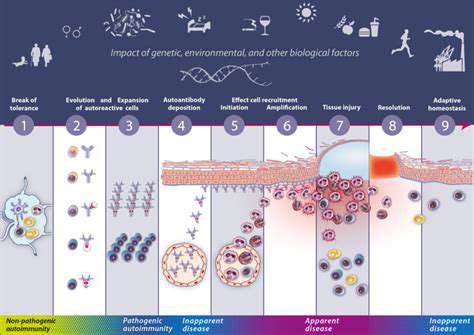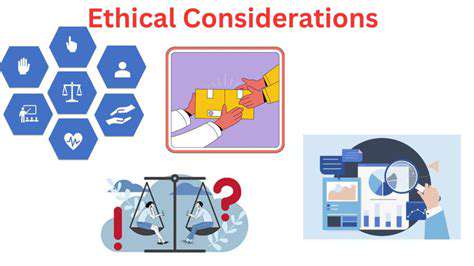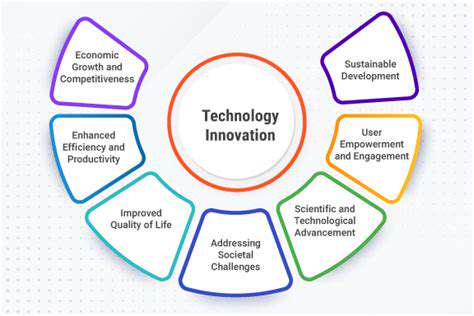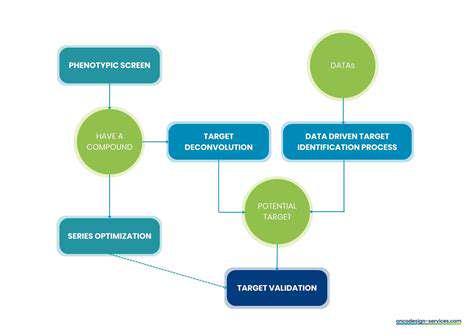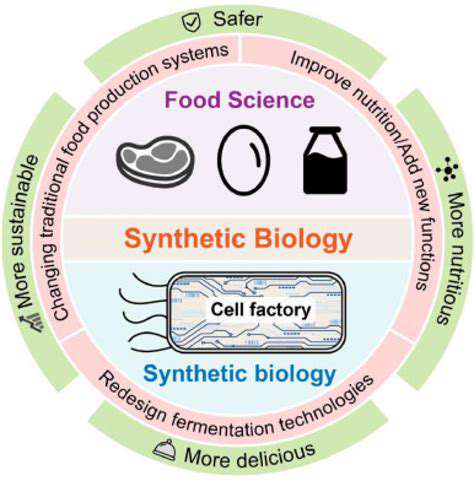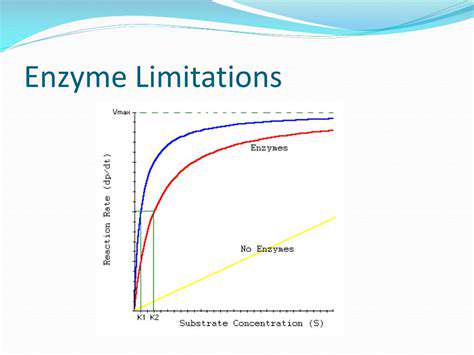Molecular diagnostics, including polymerase chain reaction (PCR) techniques, provide unparalleled sensitivity and specificity in identifying pathogens. These advanced methods can detect minute quantities of pathogens, even before clinical symptoms manifest, enabling early intervention and preventing disease outbreaks. PCR-based tests offer rapid turnaround times, allowing for swift decision-making in disease management strategies.
The ability to detect pathogens at the molecular level, well before clinical signs appear, is a game-changer in veterinary medicine. This allows for the implementation of targeted treatments and preventative measures, minimizing disease impacts on overall animal health.
Immunological Assays: Detecting Antibody Responses
Immunological assays, such as enzyme-linked immunosorbent assays (ELISAs), offer valuable insights into an animal's immune response to a specific pathogen. By detecting the presence of antibodies, these tests can indicate past or current infections, providing crucial information for epidemiological investigations and disease surveillance. The use of immunological assays is particularly effective in monitoring the spread of diseases within a population and identifying individuals at risk.
Microscopy-Based Techniques: Visualizing Pathogens
Microscopy-based techniques, such as Gram staining and Giemsa staining, remain valuable tools for visualizing pathogens in tissue samples. These techniques allow for the identification of bacterial and parasitic organisms, contributing significantly to the diagnosis of infectious diseases. Microscopic examination provides valuable morphological information, aiding in the confirmation of suspected infections and guiding treatment choices.
Automated Systems for High-Throughput Diagnostics
The integration of automated systems into diagnostic workflows is enhancing efficiency and reducing turnaround times. These systems facilitate high-throughput processing of samples, enabling laboratories to quickly analyze a large number of specimens. Automated platforms are particularly beneficial in large-scale animal health monitoring programs and disease surveillance initiatives, providing rapid responses to emerging health threats.
Image-Based Diagnostics: Enhancing Visual Assessments
Image-based diagnostic tools, such as ultrasound and radiography, are crucial for evaluating internal structures and detecting abnormalities. These methods are particularly useful for diagnosing musculoskeletal issues, reproductive problems, and other conditions that might not be evident through visual examination alone. The use of imaging technologies adds another layer of diagnostic accuracy and provides valuable supplementary information for comprehensive disease assessments.
Integration of Diagnostics into Farm Management
The integration of precision diagnostics into farm management systems is empowering farmers with data-driven insights into animal health. Real-time monitoring of disease trends, coupled with proactive intervention strategies, allows for the optimization of animal health and productivity. This integration of diagnostic tools into farm management systems allows for a more comprehensive understanding of the health status of their livestock, enabling them to make informed decisions concerning animal care and management practices.
Targeted Therapeutics for Enhanced Treatment Outcomes
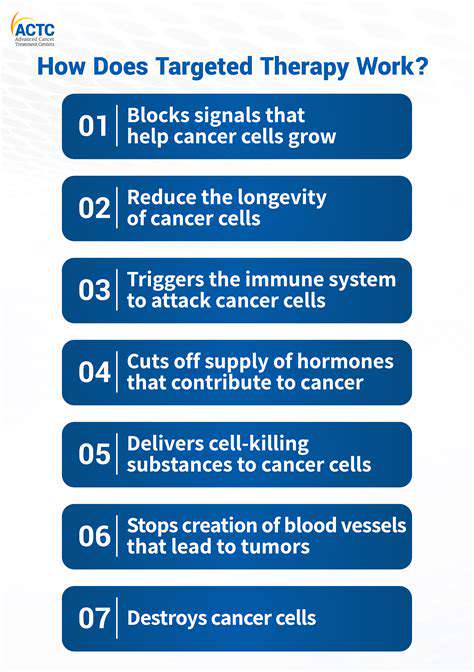
Targeted Drug Delivery Systems
Targeted drug delivery systems are crucial in modern medicine, allowing for the precise delivery of therapeutic agents to specific cells or tissues. This approach minimizes side effects by concentrating the medication at the site of action, reducing exposure to healthy tissues and organs. This approach holds great promise for enhancing treatment efficacy and reducing the often-severe side effects associated with traditional, non-targeted therapies.
The design of these systems often involves using specific ligands or antibodies that bind to receptors on the target cells. This ensures that the therapeutic load is delivered directly to the desired location, maximizing treatment efficacy while minimizing toxicity to surrounding healthy cells. This targeted approach is a cornerstone of modern cancer therapies, allowing for the precise delivery of chemotherapy agents to tumor cells.
Personalized Medicine Approaches
Personalized medicine leverages individual genetic and biological information to tailor treatments to specific patients. This approach recognizes that responses to drugs can vary significantly between individuals, highlighting the importance of considering individual patient characteristics. In oncology, understanding the specific genetic mutations driving a patient's cancer is crucial for selecting the most effective targeted therapy.
Tailoring treatment strategies to the unique genetic profile of each patient is a key aspect of personalized medicine. By understanding the specific molecular mechanisms driving a disease, physicians can select therapies that are most likely to be effective and have the fewest side effects for that individual. This personalized approach to medicine is transforming healthcare, allowing for more effective and less toxic treatments.
Gene Editing Techniques
Gene editing technologies, such as CRISPR-Cas9, offer the potential to directly modify the genetic material within cells. This approach allows for the correction of disease-causing mutations, opening up possibilities for treating previously incurable genetic disorders. For example, researchers are investigating the use of gene editing to target and eliminate cancer cells by disrupting their growth-promoting genes.
Immunotherapy Strategies
Harnessing the power of the immune system to fight disease is a cornerstone of immunotherapy. This approach aims to enhance the body's natural defenses to target and eliminate cancerous cells. Stimulating the immune response against tumor cells is a promising strategy for improving outcomes in cancer patients. This approach has revolutionized the treatment of certain cancers, showing remarkable success in some cases.
Nanotechnology in Drug Delivery
Nanotechnology offers exciting possibilities for enhancing drug delivery. By encapsulating therapeutic agents within nanoparticles, their delivery to specific targets can be precisely controlled. Nanocarriers can be designed to release drugs at a specific rate and location, maximizing efficacy and minimizing side effects. Furthermore, nanotechnology enables the development of targeted therapies for a wider range of diseases, including infectious diseases and neurological disorders.
Combination Therapies
Combining multiple therapies is frequently employed to enhance treatment efficacy and address the complexity of many diseases. Combining different targeted therapies can lead to synergistic effects, potentially leading to better outcomes than using any single therapy alone. For example, combining targeted therapies with chemotherapy or immunotherapy can improve response rates and reduce disease progression in certain cancers. This approach has proven particularly useful in complex diseases like cancer, where multiple molecular pathways are often involved.
Monitoring and Evaluation of Efficacy
Rigorous monitoring and evaluation are crucial to assess the effectiveness and safety of targeted therapies. This involves closely tracking patient responses to treatment and identifying potential side effects. Real-time monitoring of treatment efficacy is critical for optimizing treatment regimens. By carefully monitoring patient outcomes, researchers can refine treatment strategies and ensure that patients receive the most effective care possible.
Improving Animal Welfare Through Biotechnology Solutions
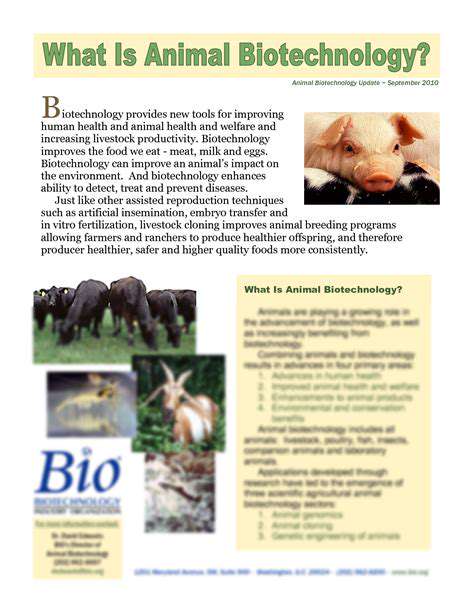
Enhancing Husbandry Practices
Improving animal welfare starts with a commitment to enhancing husbandry practices. This encompasses a wide range of factors, from providing appropriate housing conditions to ensuring access to nutritious feed. Adequate space is crucial for animals to exhibit natural behaviors, preventing stress and promoting overall well-being. A well-designed environment that considers the specific needs of the animal species is paramount.
Proper nutrition plays a vital role in maintaining optimal health and well-being. Providing a balanced diet tailored to the animals' nutritional requirements is essential to support their growth, development, and overall health. This includes access to fresh water at all times and the avoidance of feeding practices that may lead to malnutrition or other health issues.
Minimizing Stress and Fear
Stress and fear are significant contributors to poor animal welfare. Minimizing these factors is paramount to promoting a positive environment. Creating a predictable and consistent environment can greatly reduce stress levels. This includes minimizing loud noises, sudden movements, and other disruptions that may cause anxiety.
Early handling and familiarization are important for building trust and reducing fear responses. Gentle, consistent interaction with animals from a young age can establish positive associations with humans and reduce stress in the long term. This crucial aspect of animal husbandry is often overlooked, but it has a significant impact on their overall welfare.
Promoting Natural Behaviors
Animals have inherent behaviors that are essential for their physical and mental well-being. Providing opportunities for these behaviors is crucial. This can include allowing for foraging, social interaction, and exploration, as appropriate for the specific animal. Encouraging natural behaviors can not only improve their physical health but also their mental well-being, reducing stress and promoting a sense of fulfillment.
Implementing Pain Management Strategies
Pain management is a critical component of animal welfare. Appropriate pain relief strategies, when necessary, should be implemented to minimize discomfort and suffering. This may involve the use of analgesics or other methods of pain management, carefully monitored and administered by qualified professionals. Effective pain management is essential for ensuring that animals experience minimal suffering during procedures or due to injury.
Prioritizing Disease Prevention and Treatment
Disease prevention and prompt treatment are crucial for maintaining high standards of animal welfare. Implementing robust preventative measures, such as vaccination programs and sanitation protocols, can significantly reduce the risk of disease outbreaks. Early detection and treatment of illnesses are vital for minimizing suffering and ensuring the animals' well-being. This requires regular monitoring and proactive veterinary care.


